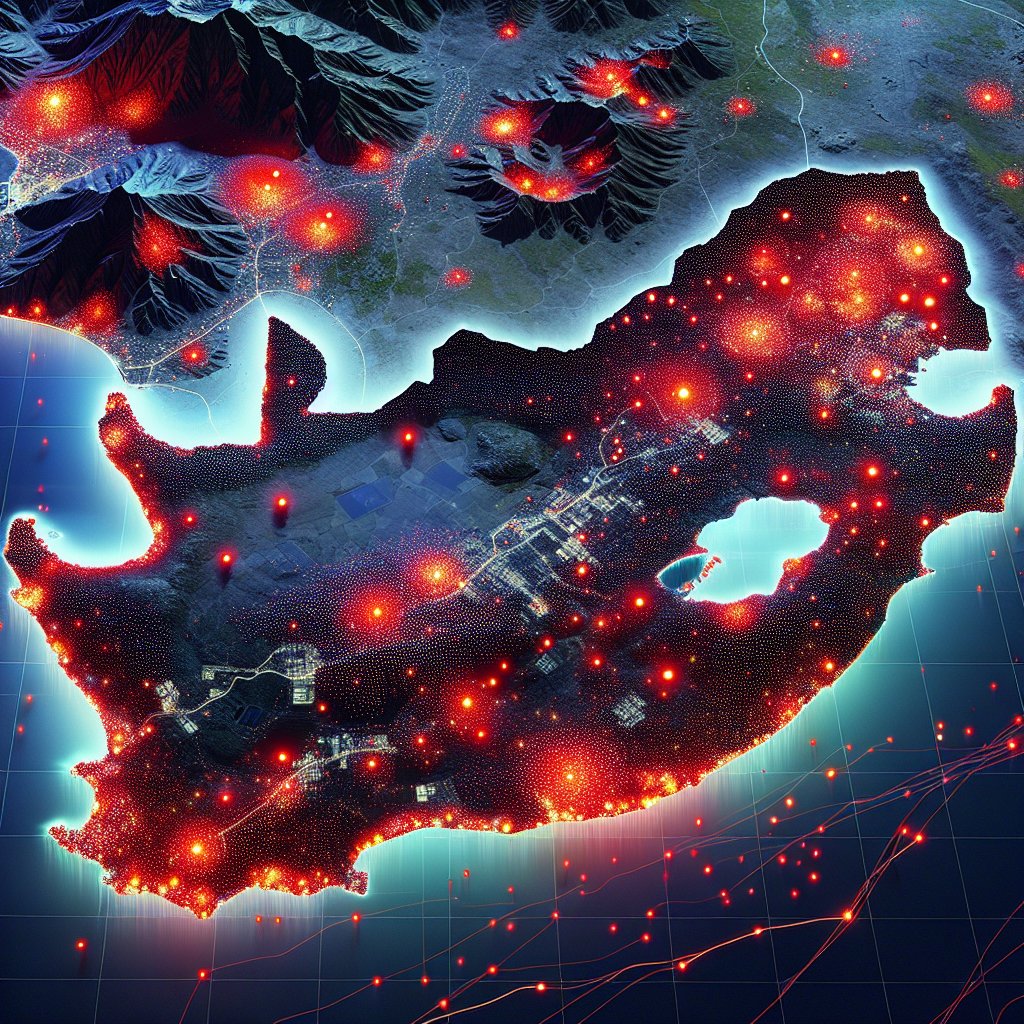Image created by AI
Cape Town's Unusual Fire Season: Surging Fire Alerts and Impact on Fynbos Ecosystem
Cape Town has seen a worrying escalation in fire alerts, with satellite data indicating that the number of fires over the past three months vastly exceeds typical figures. This comes at a time when environmental concerns and climate change are at the forefront of public discourse.
Satellites have been invaluable in fire detection, providing near real-time information about potential fires breaking often in inaccessible or remote areas. The data, collated and analyzed by The Outlier, points to this fire season's start being markedly earlier than expected, with December exhibiting exceptionally high fire alerts.
The advanced NASA VIIRS sensor was responsible for these alerts, sweeping over South Africa and capturing fire data approximately twice daily. Dr. Heath Beckett from Stellenbosch University’s School for Climate Studies, however, cautions against a direct interpretation of the data. Due to the sensor's frequency of passes, a fire could be counted multiple times; conversely, smaller fires which are quenched rapidly may go undetected.
With Cape Town being host to the unique fynbos biome, fire activity is a natural part of the ecosystem's life cycle. Regular fires are, in fact, essential for fynbos regeneration. Yet, the increased frequency and intensity of these fires raise concerns of ecological imbalances.
January 2024, now illuminated by red hotspots in recently released animation images, saw most of the fire activity focused near Simon’s Town, on the Cape Peninsula. This diverges from the pattern observed in 2015 where fire alerts were predominantly near Hout Bay.
What is of particular concern is the interval between fires. Fynbos ecosystems require a burn every 12 years or so to maintain biodiversity and assure the healthy germination of seeds. However, Professor Brian van Wilgen notes that if the interval drops below this period, it could lead to detrimental effects on the flora, affecting diversity and the balance necessary for this unique ecosystem to thrive.
The correlation between the provided fire alert data and actual burn patterns emphasizes the importance of this issue, even though fire alerts might inflate the counts. The consistent correlation supports the crucial nature of these datasets for a comprehensive understanding of the dynamics at play.
For residents and visitors eager to explore Cape Town and its stunning environs, it is worth considering the broader ecological context involving the region's fire history. The visualization provided by The Outlier, characterized by vibrant color-coded dots, serves as a stark reminder of the urgency required to address climate-related phenomena that are likely contributing to the changes observed in Cape Town's fire patterns.
In summary, the data and analyses highlight a critical juncture for Cape Town's environmental stewards. It becomes imperative for citizen action, informed policy-making, and enhanced management strategies to mitigate the adverse effects of too-frequent fire events on the irreplaceable fynbos biome, thus preserving the region's natural heritage for future generations.










